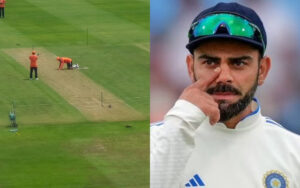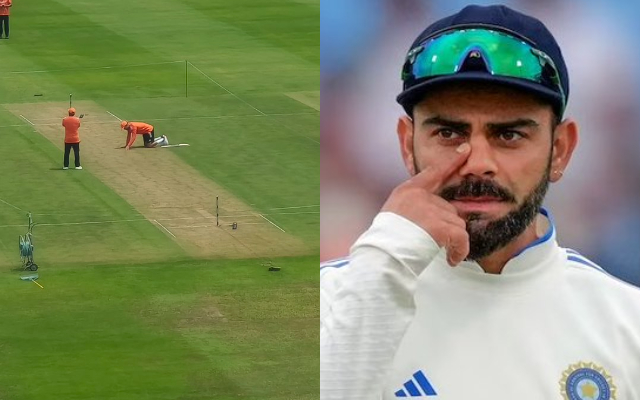
On a day that will be etched in history, Cape Town witnessed an astonishing spectacle, as 23 wickets fell on a chaotic opening day of the second Test between South Africa and India.
The most remarkable twist came when India, from 153 for 4, suffered an unprecedented collapse and lost six wickets for zero runs in 11 deliveries. This was the first time in 2,522 Test matches that a team had lost six wickets for no run. The record-breaking nature of the meltdown added a surreal touch to the proceedings, leaving fans worldwide in awe and disbelief.
Despite the jaw-dropping collapse, India were still in a strong position on a Newlands pitch that defied the expectations of both teams. Characterised by excessive seam movement and unpredictable bounce throughout the day, the surface created an environment where batsmen struggled to adapt. The challenges posed by the bowlers forced batters to play cautiously, making every run a hard-earned victory. The total of 23 wickets on a day set a record for Test cricket in this century. Had it been in India or the Asian subcontinent, headlines would have screamed ‘rank turners’ and ‘doctored tracks’.
Dean Elgar’s dismissal twice in one day, a rare feat mirrored only by Australia’s Jack Barrett in 1890, added another layer of historical significance to the drama. Elgar’s post-match comments reflected the bewilderment shared by many. “This one just seemed to get quicker as the session went on,” said the opener, who is playing his farewell Test.
South Africa’s batting consultant, Ashwell Prince, expressed astonishment, saying that he had “never seen a Newlands pitch like this before.” He pointed out the unusual combination of accentuated ball movement and inconsistent bounce that made batting a daunting task for both teams.
Bounce variations at the opposite ends further complicated matters. Bowlers operating from the Wynberg End got uneven bounce, while those at the Calvin Grove End saw deliveries jump unexpectedly. The disparity in bounce levels perplexed players and observers alike.
For the Latest Sports News: Click Here
23 wickets fell on Day 1!
Mohammed Siraj’s 6-fer, India’s batters’ horrible collapse, and South Africa still trailing by 36 runs with 7 wickets in hand in their 2nd innings@CricSubhayan reviews Day 1 straight from Cape Town@ThumsUpOfficial #SAvsIND #ViratKohli #MohammedSiraj pic.twitter.com/teLusvZGLv
— RevSportz (@RevSportz) January 3, 2024
As South Africa ended the day at 62/3 in the second innings, the prospect of the match concluding in just two days loomed large. Elgar’s insights into the pitch emphasised the need for consistent bounce, highlighting the difficulties posed by the unpredictable surface. Despite the challenging conditions, India’s bowlers, led by Mohammed Siraj’s exceptional six-wicket burst, came up with disciplined and skilful performances.
The historical significance of the day extended beyond the on-field action. Only one men’s Test, the one in Melbourne between Australia and England in 1902, witnessed more wickets on the opening day. It was 25. The tally of 23 created a unique and unprecedented chapter in modern Test history.
The nature of the pitch reignited discussions about the quality of playing surfaces in international cricket. The current series, marked by successive challenging pitches, raises questions about the balance between the bat and ball and the impact of such conditions on the overall quality of Test cricket.
Prince, who grew up playing at Newlands for Western Province and also coached there, said he’s never seen a pitch do as much as this one. “I played a lot of cricket here, I coached here, and I’ve never seen the pitch play that quickly on Day 1. It usually speeds up on Day 2,” Prince said.
“The thing is batters don’t mind pace, but it was a little inconsistent in the bounce. Some of the things I saw today I have never seen at Newlands …There were pitched up balls and the keepers were taking them above their heads. One team can be bowled out (cheaply). It can happen when you give a quality bowling line-up favourable conditions. They can do serious damage. So if both line-ups can’t bat on the surface, it says a lot,” Prince added.
The unforgettable day of cricketing chaos at Cape Town serves as a reminder of the unpredictability and drama that this format can deliver. The players, the pitch, and the record books have collectively woven a narrative that will be etched in cricketing history. Now it remains to be seen what rating the match referee Chris Broad gives to the Newlands track after the game.
Also Read: Virat Kohli’s Mastery Masks Falling Test-Batting Standards Worldwide




